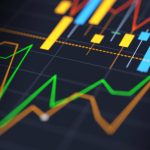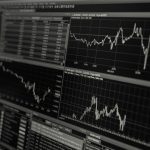Having a good understanding of leverage margin and risk difference is important for aspiring traders. Also important are the various strategies and tools that may make the difference between a profitable and unsuccessful trading career. Understanding the various types of leverage and their various strengths and weaknesses can also help you in making more educated trading decisions.
Leverage is a technique used by investors to increase their investment returns. It does so by borrowing money from a broker. The amount of leverage is based on the type of asset you are trading, the risk involved, and the rate at which you are trading. If you choose a strategy that utilizes leverage, you will have to pay interest on the money borrowed. You can also stop paying the interest when you decide to close your position. Using leverage to your advantage can enlarge your profits, but it can also magnify your losses.
It’s important to make sure that you only use leverage when the opportunity presents itself. It’s also wise to consider your risk tolerance and your portfolio size before using leverage. It’s also a good idea to take your time when using leverage, and to use the strategies that work best for you. The best leverage strategies involve research and practice.
Leverage and margin are related concepts that are often used interchangeably. However, leverage is more than just an amount of money you borrow from your broker. It also includes the amount of cash you have brought in and the value of the securities you are trading. Margin also has a number of functions, but the main one is to provide protection for the broker in case of a loss. Having a small amount of margin in your account will help to keep you from being in a bind if your trade goes against you.
Another Way to Leverage
Leverage and margin are not the only ways to increase your trading power. You can also use leverage strategies without a margin account. However, you may want to consider a reputable broker, as they will be able to provide you with the responsible leverage levels you need.
A good rule of thumb is to use leverage when you have a clear advantage over the market. For example, you may decide to borrow a little money to purchase a stock. Leverage can also be used to amplify your profits by purchasing a larger number of shares. It’s also a good idea not to overdo it, as your portfolio may end up requiring larger deposits to cover losses. Leverage can also be used to make a trade seem more exciting.
Potencial Gains
Using leverage can be a very useful tool to increase your portfolio’s potential returns, but it’s important to do your research and make sure that you know what you’re getting into. The best leverage strategies involve a little planning and research, but they can be profitable.
It’s difficult to decide the most appropriate level to choose, as it is based on the individual’s trading strategy and experience.
In general, the longer you plan to hold your position open the lower the leverage will be. This is logical since long-term positions are typically open when major market movements are anticipated.
A preferred leverage for a trader in a position typically begins around 2:1 to 5:1 but increases up to around 20:1. When scalping, traders use an leverage that begins at 50:1 but can reach up to 2000:1. For the day trader, I’d prefer to suggest 50:1 or 100:1 to be a suitable-to-high leverage.
The Difference Between Leverage and Risk
The standard leverage employed by professional forex traders is 100:1. That means that with $500 in your account, you’ll be able to manage up to $50K. 100:1 is the ideal leverage you can use.
The most important aspect is the amount of equity in your account you are willing to lose in trading. If you’re willing for losing 2% percent of equity in your account through an exchange, this is an amount of $10 for a 500-dollar account or $20 for an account worth $1000 or $200 on a 10K account. This is also known as the percentage risk you’re willing to take.
The terms leverage and risk are not the same things. Many people think of leverage as risk. Some say that leverage isn’t crucial, it’s the size of the lot which is crucial. This is partially true. In reality, what matters is the risk percentage you decide to set to use for the account. You translate the Risk Percentage to Lot Size by using the Leverage you selected for your account and the amount of your Account Equity. Let me explain how.
When we make a trade, we choose how risky we’re willing to take. The size of the lot can be calculated by size of the stop loss. Let’s say you have a trade set-up. Stop loss of 30 pip. It is important to translate the 30 pips into the size. This is dependent on the risk you’re willing to accept. If you’re willing to risk losing 2% of the equity in your account on this deal. That means that if it fails to make 2% from $500, you will lose $10. This means you’ll have $490 on your account in the event of a loss. If you’re willing to lose $10 in this trade, you pick 2% of the risk. Therefore, you’ll be trading with the size of 0.03. With this lot size, if you lose 30 pips you’ll lose $9. If you make a trade using an amount of 0.04 and you lose 30 pips, it will mean you’ll lose the sum of $12. Therefore, the size of your lot should be in the range of 0.03 to 0.04.
Leverage Vs Margin
Leverage is the term used to describe borrowed capital. It allows you to trade more than the money you have.
Imagine you have $1000 to trade on your account. The broker you use gives you a leverage of 20 times. This means you could trade up to 1000 times 20 = $20000.
It is the option brokers offer their clients to trade with more cash than they have. If you’re earning profits with leverage, it’s beneficial, however, losing it means you lose more than you had.
Leverage is usually described in terms of a ratio such as 20:1, 30:1, or 50:1. That means that when you have the amount of $1 you can exchange it for as much as $20 on a 20:1 leverage.
The margin you are given is the amount that you must have in your account to open investment. The term “margin” is usually expressed in percent. It is the fraction of money that a trader must have in his account to open a position.
In the above example that $1000 that you can have in your account initially is the margin that is required to place a trade.







